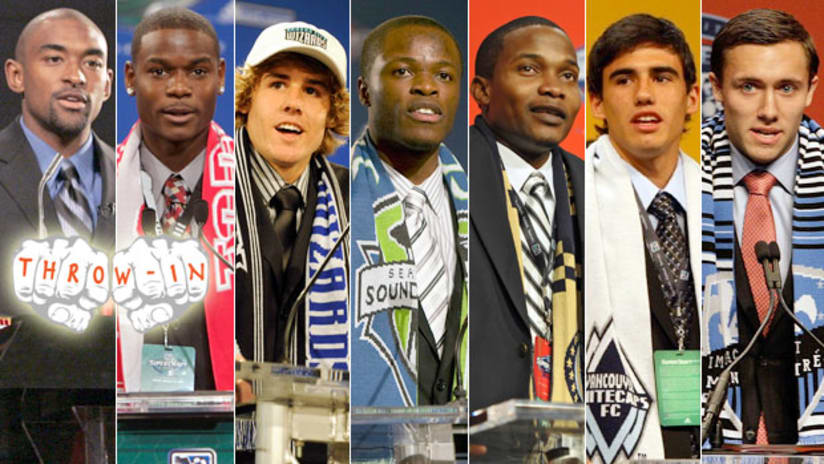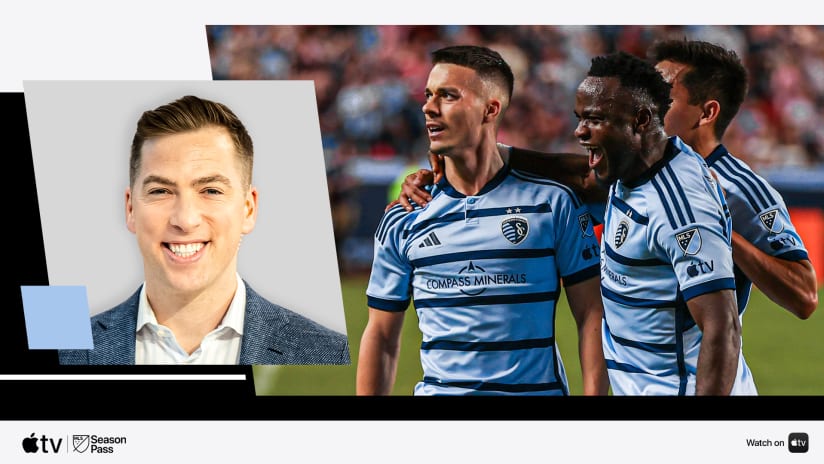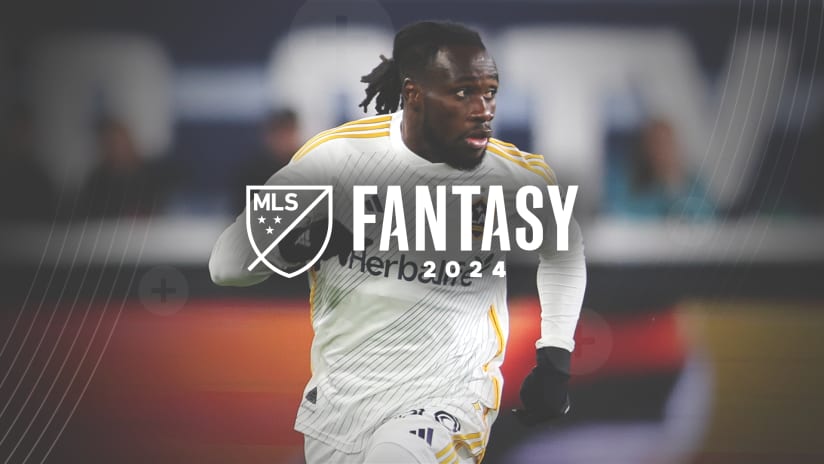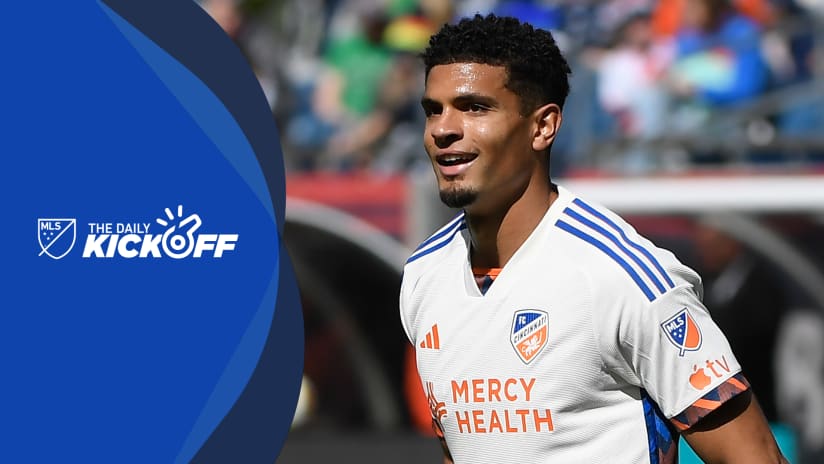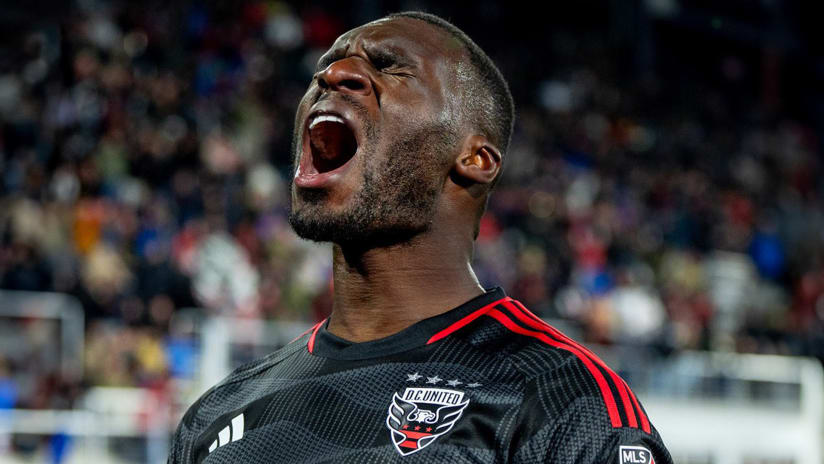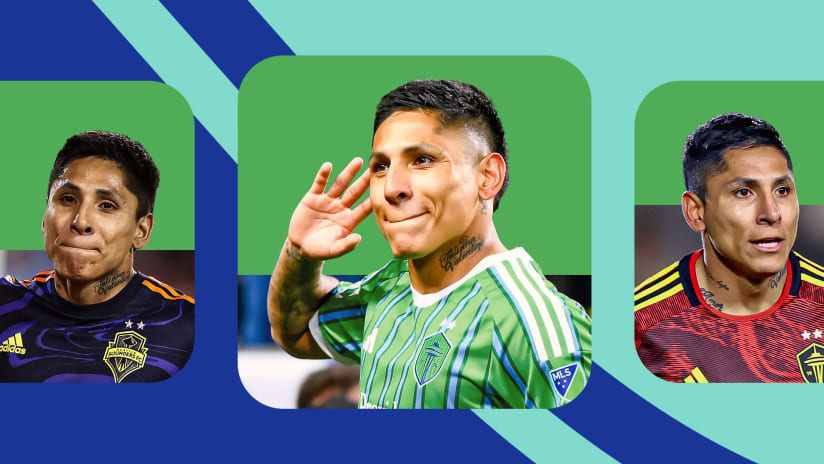Alright, Andrew Wenger, you’re the 13th No. 1 pick in the history of the MLS SuperDraft. Now whose career path do you want to follow? That of Maurice Edu? Or Nik Besagno's?
It’s become increasingly hard to know what to expect from the top draft pick in Major League Soccer’s winter hoedown these days. It’s not quite like the NBA or NFL draft, where a No. 1 is a monstrous stud out of school and is immediately required to lift his new professional team out of the depths of its previous season’s finish.
The MLS SuperDraft isn’t just a collection of college kids anymore. Since MLS went big in 2000, it’s become a buffet of sorts for teams to pick between college talent, international kids and the occasional youth prospect. I guess that’s what makes it “super,” right?
WATCH: Wenger goes No. 1 in 2012
But as the SuperDraft has evolved and changed, so have the expectations placed on the top pick. It wasn’t that long when we were discussing the supposed curse of the No. 1 pick. The first five editions of the SuperDraft featured top choices that never quite met the hype.
In 2000, it was the MetroStars selecting UCLA defender Steve Shak. In 2001, San Jose took North Carolina forward Chris Carrieri. In ’02, it was Dallas grabbing UConn defender Chris Gbandi. In ’03, D.C. grabbed Virginia striker Alecko Eskandarian and, a year later, “lucked” into 14-year-old Freddy Adu. In ’05, it was another teen starlet, defensive midfielder Besagno, picked by expansion Real Salt Lake.
For various reasons, all of these players ended up being coulda-beens, still-haven’ts and never-weres. Whether it was pressure, injuries, an inability to adapt, whatever – the curse of the No. 1 pick became a specter looming over the SuperDraft like a black cat running across the stage. (USA Today did a nice rundown of their fates here.)
What happened the following year changed the game a bit. Although not at first. Lightning-fast fullback Marvell Wynne was chosen with the first pick in 2006 by the MetroStars. And like his predecessors, the UCLA man knew a lot of bad juju was following him up to the podium when Don Garber called his name in Philadelphia.
And though Wynne’s speed made him stand out, he didn’t stick with the Metros-turned-Red Bulls. Bruce Arena eventually dealt him to Toronto, where he had similar mixed performances during two seasons under Mo Johnston and John Carver. In early 2010, Preki dealt him to Colorado. It looked like he was another No. 1 pick gone bust.
Then something interesting happened: Someone saw something in him that no coach had before. Then Rapids head coach Gary Smith shifted Wynne to center back. And lo and behold, the would-be overlapping speedster was converted into a position in which he has seen his greatest success as a pro, helping Colorado to their MLS Cup 2010 title while paired with the perfect yin to his yang, Drew Moor.
It marked the end of a long and strange process for the former No. 1 pick. Wynne delivered on his promise – he just did it five seasons later. Something similar happened to the first pick of the 2008 SuperDraft, Wynne’s fellow UCLA Bruin Chance Myers.
Drafted as a right back by Kansas City, Myers barely saw time at the position during his rookie campaign. Injuries also slowed him down and prevented him from getting on the field. When he was eventually pushed higher up the field to right wing – a position he played a bit in college – it worked for a while, until injuries derailed him again.
It wasn’t until this past season that the former Generation adidas man found his way into the fulltime spot he was drafted to play. And Myers was excellent for Peter Vermes, helping Sporting KC reach the Eastern Conference Championship.
The eventual success stories of Wynne and Myers proved that maybe the No. 1 pick doesn’t have to be an immediate star. As long as someone is invested in developing them and cultivating their talents – and has a good dose of patience – top selections often have a way of working out.
WATCH: SuperDraft 2011 flashback - Omar Salgado
Vancouver certainly hope that’s the case. Their surprise No. 1 pick of last year’s SuperDraft, Omar Salgado, is still a project. Director of Soccer Tommy Soehn admitted that at the time when the Whitecaps grabbed the US youth teamer.
The Texan teen forward appeared in only 14 league games for the expansion ‘Caps in 2011, averaging just 36 minutes in each contest and scoring only once. Still just 18, Salgado has plenty of potential, but no one in the Vancouver organization expects him to become a star overnight.
Of course, other No. 1 picks during the past few years certainly would have broken the curse – if anyone still thought there was one. Edu and Steve Zakuani immediately delivered as pros when they were picked in 2007 and ’09 by Toronto and Seattle, respectively. Danny Mwanga also was excellent for expansion Philadelphia in his debut 2010, though he was slowed by injuries last season.
Which brings us to the uber-versatile Wenger. The pressure may be off the Duke star and 2011 Hermann Trophy winner to a certain degree, thanks to the mixed results and differing expectations of the last six No. 1s. He won’t have to worry about facing the massive scrutiny an NBA or NFL No. 1 pick does, nor the yardstick comparisons of whether he’s going to be a LeBron James or a Kwame Brown, an Eli Manning or a JaMarcus Russell.
But it’s on him now to decide what kind of player he’s going to be. The Impact say they're going to bring him along slowly, which almost certainly will work in his favor. The rest is up to him. The SuperDraft may be over, but the clock is now officially ticking on Wenger’s career.
Jonah Freedman is the managing editor of MLSsoccer.com. “The Throw-In” appears every Thursday.


